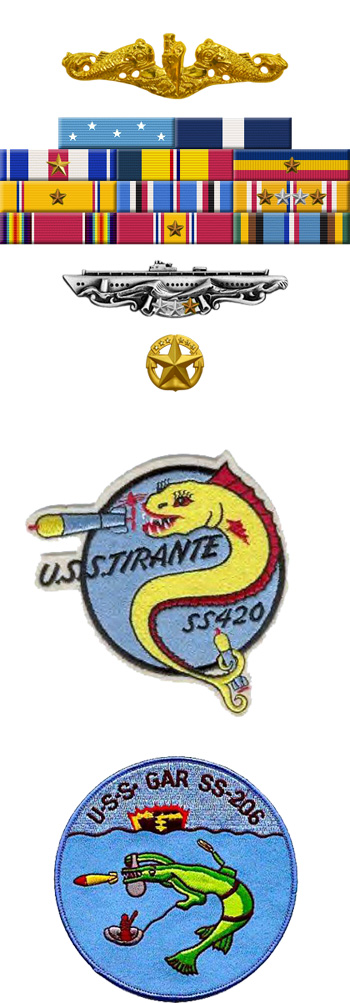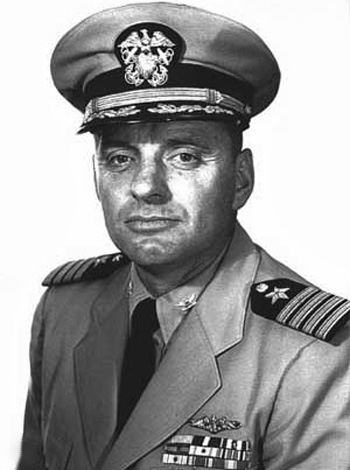
|
George L. Street, III |
 |
|||
| Rank, Service | ||||
Captain O-6, U.S. Navy |
||||
| Veteran of: | ||||
|
||||
| Tribute: | ||||
George Street was born on July 27, 1913, in Richmond, Virginia. He enlisted in the U.S. Naval Reserve on September 23, 1931, and served until entering the U.S. Naval Academy on June 9, 1933. Street graduated from the Naval Academy and was commissioned an Ensign on June 3, 1937, and then served aboard the light cruiser USS Concord (CL-10) from July 1937 to December 1938. His next assignment was as assistant navigator aboard the battleship USS Arkansas (BB-33) from December 1938 to July 1940, followed by U.S. Navy Submarine School at New London, Connecticut, from July to December 1940. LCDR Street served aboard the submarine USS Gar (SS-206) as Executive Officer and Navigator for 9 war patrols in the Pacific between January 1941 and May 1944, and then commanded the submarine USS Tirante (SS-420) from July 1944 to January 1946, including 3 war patrols in the Pacific during the last year of World War II. CDR Street served for a short time in the Navy Department working as a technical advisor for a submarine documentary from January to July 1946, followed by service in the Office of Naval Research in the Department of the Navy from July to October 1946. He commanded the submarine USS Requin (SS-481) from October 1946 to June 1948, and then attended Armed Forces Staff College before serving on the staff of the college until February 1951. CDR Street attended the Fleet Sonar School at Key West, Florida, from February to April 1951, and then commanded the destroyer USS Holder (DDE-819) from April 1951 to May 1952. His next assignment was in the Political-Military Policy Division in the Office of the Chief of Naval Operations from July 1953 to August 1955. CAPT Street attended the National War College in Washington, D.C., from August 1955 to June 1956, and then served as the Fleet Operational Readiness and Training Officer on the staff of the Commander-in-Chief Atlantic Fleet from July 1956 to July 1958. He served as commanding officer of the attack transport USS Fremont (APA-44) from August 1958 to July 1959, and during this time joined in landing Marines in Beirut during the Lebanon Crisis between August and September 1958. CAPT Street served as commander of the Naval ROTC Detachment at the Massachusetts Institute of Technology from August 1959 to September 1961, and then served as commander of Submarine Squadron Five in San Diego, California, from October 1961 to October 1962. His next assignment was on the faculty of the Naval War College in Newport, Rhode Island, from November 1962 to October 1964, followed by service as commander of Mare Island Group Pacific Reserve Fleet and commander of Submarine Group San Francisco in San Francisco, California, from December 1964 to September 1965. CAPT Street relinquished command of Mare Island Group in September 1965, but continued to command Submarine Group San Francisco until his retirement from the Navy on August 10, 1966. After retiring from the Navy, he commanded the Navy Junior ROTC program at Woburn Senior High School in Woburn, Massachusetts, from 1967 to 1990. George Street died on February 26, 2000, and after his remains were cremated, half of his ashes were scattered at sea from a submarine, and the other half were interred at Arlington National Cemetery. |
||||
|
||||

